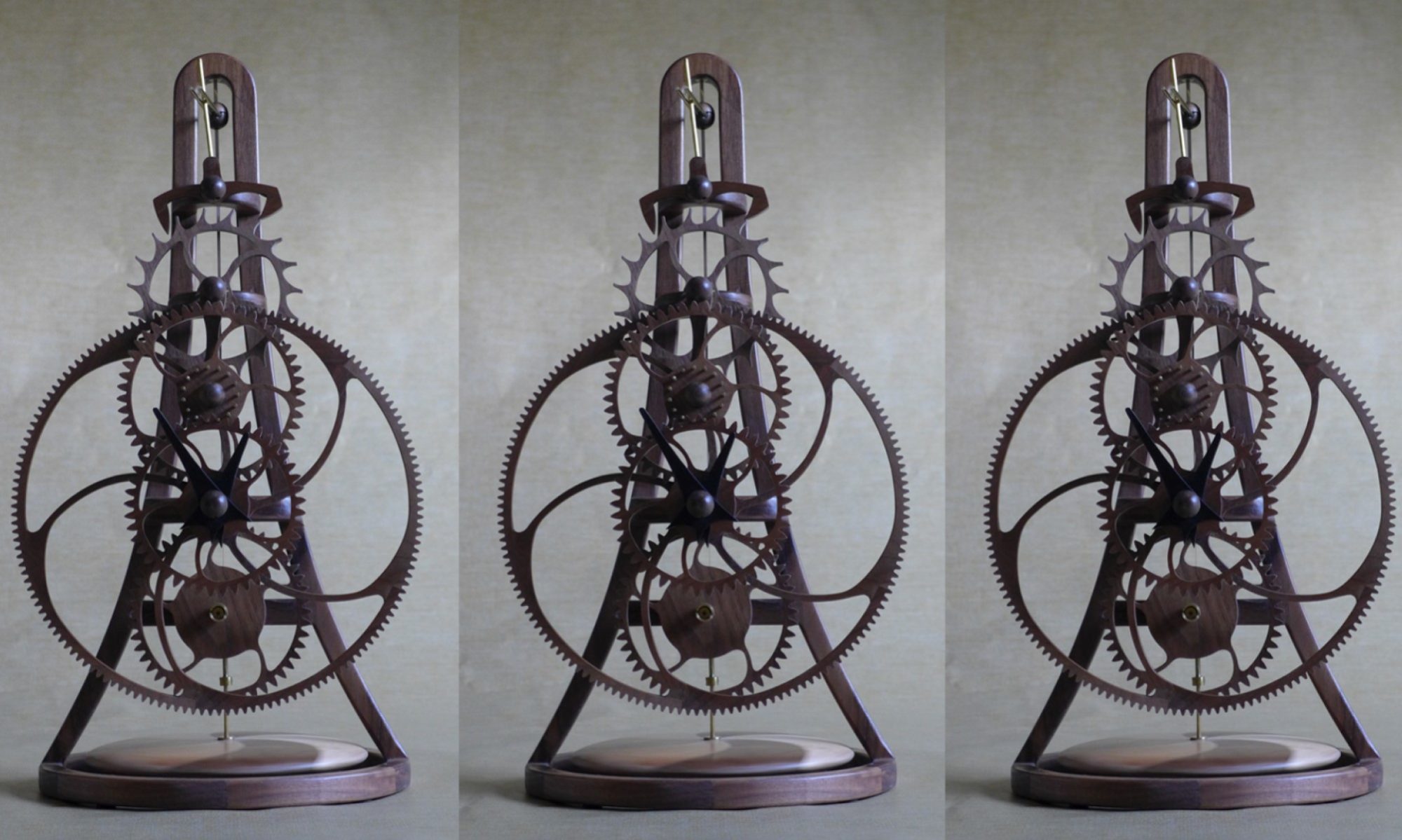After a long gestation, the smallest clock I have made so far (approximately 16 inches high, 6 inches wide and 5 inches deep) is complete and running well.
I have named the clock “Horus” after the Egyptian god of the sky as its shape is reminiscent of the sign for the eye of Horus.

Additional photos at https://cedarclocks.com/photos/
The clock is powered by an electric powered remontoire (winding mechanism) that rotated around the winding wheel approximately every 15 minutes. Because the clock is so small the 9-volt battery that powers the remontoire motor is located in a separate battery box that is connected by a cable from the back of the clock. I plan offer an option to power the clock from an electric outlet using a small transformer.
I was concerned that achieving the tight tolerances required to construct a clock this small would be a challenge. This did not prove to be a problem, but I struggled finding the right combination to torsional pendulum spring and weight as well as the correct dimensions for the pallet fork to get the clock to run well. After considerable experimentation with different spring thicknesses and pendulum weights, I found a combination that works well.
On my previous clocks I have not had any issues with the wooden wheels (gears) warping. I originally use three layers of 1/16” thick walnut, with the grain in alternating orientations, for the main wheel of the clock. Initially, this looked great and the clock ran well, but over a few weeks the wheel gradually warped until they looked like potato chips and the clocks stopped running. To solve this, I created wood laminates from 1/40” thick walnut veneer. I remade the main wheel uses 7 veneer plies and the other wheels 5 veneer plies, alternating the grain direction. The clock had been running for a few weeks with the new wheels and there is no sign of warping.
I plan to run the clock for a few more weeks before I offer it for sale.

